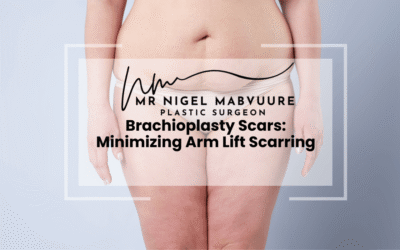Achieving Optimal Body Contouring with Targeted Liposuction
Liposuction is a versatile and effective body contouring procedure that can target stubborn fat deposits in various areas of the body. By understanding the different treatment zones and selecting the best areas for your individual needs, you can achieve significant improvements in your body contours and overall proportions. Combining multiple liposuction areas in a single session can provide more comprehensive results, while complementary treatments can help maximize outcomes. Maintaining a healthy lifestyle and following your surgeon’s post-operative instructions are crucial for ensuring long-lasting liposuction results. With careful planning and execution, liposuction can help you achieve the body shape you desire and boost your self-confidence.
Here is the blog post content following your specified requirements:
Table of Contents
- Understanding Liposuction Treatment Zones
- Top Body Areas for Effective Liposuction Results
- Combining Multiple Liposuction Areas in One Session
- Areas to Avoid with Liposuction Fat Removal
- How to Choose the Best Liposuction Areas for You
- Maximizing Liposuction Results with Complementary Treatments
- Liposuction Recovery and Maintenance Tips by Body Area
Understanding Liposuction Treatment Zones
Liposuction is a versatile body contouring procedure that can effectively target and remove stubborn fat deposits from various areas of the body. Understanding the different liposuction treatment zones is crucial for patients considering this procedure. The most common areas treated with liposuction include the abdomen, flanks (love handles), thighs, buttocks, back, upper arms, and neck. Each zone has its unique characteristics and fat distribution patterns, which can influence the results achievable with liposuction. By comprehending these treatment zones, patients can better communicate their goals with their plastic surgeon and develop a personalised treatment plan that addresses their specific concerns.
Top Body Areas for Effective Liposuction Results
While liposuction can be performed on nearly any area of the body with excess fat, certain regions tend to respond particularly well to this procedure. The abdomen is one of the most popular liposuction treatment areas, as it often accumulates stubborn fat that resists diet and exercise efforts. The flanks, or love handles, are another common zone targeted with liposuction to achieve a more streamlined silhouette. The thighs, including the inner and outer thighs, can also benefit greatly from liposuction, resulting in a more proportionate and toned appearance. Other areas that typically yield excellent liposuction results include the buttocks, back, upper arms, and neck. By focusing on these top body areas, patients can achieve significant improvements in their body contours and overall proportions.
Combining Multiple Liposuction Areas in One Session
One of the advantages of liposuction is the ability to treat multiple body areas in a single session, allowing for a more comprehensive body contouring approach. Many patients opt for combination procedures, such as treating the abdomen and flanks together or addressing the thighs and buttocks simultaneously. This approach can provide more harmonious results and reduce overall recovery time compared to undergoing separate procedures. However, it is essential to note that the extent of liposuction performed in one session will depend on various factors, including the patient’s health, the amount of fat being removed, and the surgeon’s recommendations. In general, most patients can safely undergo liposuction on two to three areas during a single procedure. Combining multiple liposuction areas can help patients achieve their desired body shape more efficiently and effectively.
Areas to Avoid with Liposuction Fat Removal
While liposuction is a highly effective fat removal technique, there are certain areas where it may not be the most suitable option. The face, for example, is generally not recommended for liposuction due to the delicate nature of facial fat and the potential for adverse changes in facial contours. In some cases, facial liposuction may be used conservatively to address specific concerns, such as a double chin, but it should be approached with caution. Another area to avoid with liposuction is the breasts, as this procedure cannot effectively address sagging or reshape the breasts. For breast-related concerns, procedures such as breast lift or reduction may be more appropriate. Additionally, liposuction should not be used as a weight loss solution for significantly overweight individuals, as it is designed for targeted fat removal rather than overall weight reduction. It is crucial for patients to have realistic expectations and understand the limitations of liposuction to ensure optimal results.
How to Choose the Best Liposuction Areas for You
Choosing the best liposuction areas for your individual needs and goals is a crucial step in achieving successful results. The first consideration should be your specific concerns and the areas where you have stubborn fat deposits that are resistant to diet and exercise. It is also essential to evaluate your overall body proportions and determine which areas, when treated, would provide the most significant improvement in your silhouette. Consulting with a qualified and experienced plastic surgeon is invaluable in this process, as they can assess your unique anatomy, discuss your goals, and recommend the most suitable treatment plan. During your consultation, your surgeon will examine your areas of concern, assess skin elasticity, and determine the amount of fat that can be safely removed. They will also take into account factors such as your age, overall health, and any underlying medical conditions that may impact your eligibility for liposuction. By collaborating closely with your surgeon and carefully considering your individual needs, you can select the best liposuction areas to achieve optimal body contouring results.
Maximizing Liposuction Results with Complementary Treatments
While liposuction is a highly effective standalone procedure, combining it with complementary treatments can help maximize results and achieve a more comprehensive body transformation. One popular option is to combine liposuction with skin tightening procedures, such as radiofrequency therapy or laser treatments, to address any mild skin laxity that may remain after fat removal. This combination can help ensure a smoother, more toned appearance in the treated areas. Additionally, many patients choose to undergo liposuction in conjunction with other body contouring procedures, such as a tummy tuck or breast surgery, to achieve a more dramatic and harmonious transformation. Non-surgical treatments, such as CoolSculpting or Kybella injections, can also be used to complement liposuction results by targeting smaller, localized fat deposits. By incorporating complementary treatments into your liposuction treatment plan, you can optimize your results and achieve a more comprehensive improvement in your body contours.
Liposuction Recovery and Maintenance Tips by Body Area
The recovery process following liposuction can vary depending on the specific body areas treated and the extent of the procedure. In general, patients can expect some swelling, bruising, and discomfort in the treated areas, which can be managed with prescribed pain medication and compression garments. The duration of the recovery period will also depend on the number of areas treated and the amount of fat removed. For example, patients who undergo liposuction on a single area, such as the abdomen, may experience a shorter recovery compared to those who have multiple areas treated. To maintain liposuction results, it is crucial to adopt a healthy lifestyle, including a balanced diet and regular exercise routine. While the fat cells removed during liposuction will not return, remaining fat cells can still expand if a patient gains weight. Maintaining a stable weight and engaging in physical activity tailored to the treated areas can help ensure long-lasting results. Additionally, following your surgeon’s post-operative instructions closely and attending all follow-up appointments can help facilitate a smooth recovery and optimal outcomes.
Frequently Asked Questions
What areas of the body can be treated with liposuction?
Liposuction can be used to treat various areas of the body, including the abdomen, flanks (love handles), thighs, buttocks, back, upper arms, and neck. These areas often accumulate stubborn fat deposits that are resistant to diet and exercise, making them ideal targets for liposuction.
How many areas can be treated with liposuction in a single session?
In most cases, patients can safely undergo liposuction on two to three areas during a single procedure. The extent of liposuction performed in one session will depend on factors such as the patient’s health, the amount of fat being removed, and the surgeon’s recommendations. Combining multiple areas can provide more comprehensive results and reduce overall recovery time.
Are there any areas that should be avoided with liposuction?
The face and breasts are generally not recommended for liposuction. Facial fat is delicate, and liposuction may cause adverse changes in facial contours. For breast-related concerns, procedures such as breast lift or reduction may be more appropriate. Additionally, liposuction should not be used as a weight loss solution for significantly overweight individuals.
How can I choose the best liposuction areas for my needs?
To choose the best liposuction areas, consider your specific concerns and the areas with stubborn fat deposits resistant to diet and exercise. Evaluate your overall body proportions and consult with a qualified plastic surgeon who can assess your unique anatomy, discuss your goals, and recommend the most suitable treatment plan.
Can liposuction be combined with other treatments for better results?
Yes, liposuction can be combined with complementary treatments to maximize results. Skin tightening procedures, such as radiofrequency therapy or laser treatments, can address mild skin laxity after fat removal. Liposuction can also be combined with other body contouring procedures, like a tummy tuck or breast surgery, for a more comprehensive transformation.
What can I expect during the recovery process after liposuction?
During the recovery process, patients may experience swelling, bruising, and discomfort in the treated areas, which can be managed with pain medication and compression garments. The duration of recovery depends on the number of areas treated and the amount of fat removed. Following your surgeon’s post-operative instructions and maintaining a healthy lifestyle can help ensure optimal results.
How can I maintain my liposuction results long-term?
To maintain liposuction results, adopt a healthy lifestyle that includes a balanced diet and regular exercise. While the removed fat cells will not return, remaining fat cells can still expand with weight gain. Maintaining a stable weight and engaging in physical activity tailored to the treated areas can help ensure long-lasting results.




